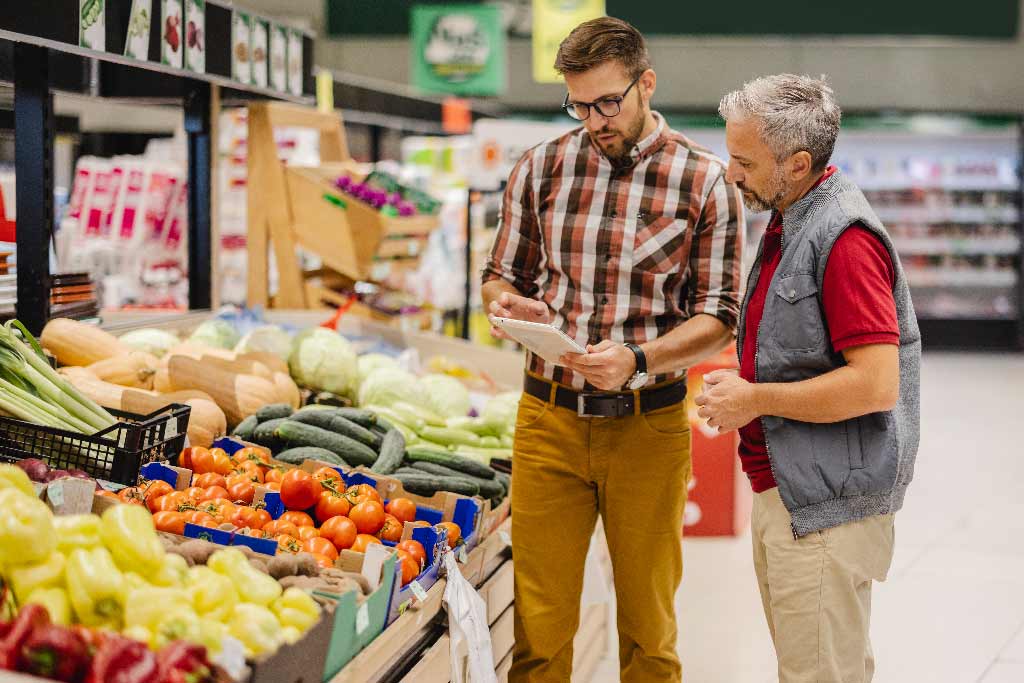7 fresh priorities for grocers in 2025
From automation to shifting consumer values, major forces are reshaping grocery retail. Here are seven trends set to influence the grocery industry in 2025.
1. Digital transformation gets real
Remember when digital transformation was merely a hot topic in the industry? Now it’s finally happening.
Grocers are making major moves to upgrade their core technology, especially ERP and WMS systems. They’re getting serious about food tracking too, implementing specialized solutions that help manage products made in their facilities. It’s all about staying ahead of FSMA 204 requirements while making recall management more efficient.
2. Traceability takes center stage
Here’s something interesting: amid rising food safety concerns and recent high-profile recalls, major retailers like Walmart, Target and Albertsons aren’t just following the FDA’s traceability rules. They’re going way beyond them. By tracking everything rather than just required items, they’re building stronger safety nets for recalls and staying ready for any future regulatory changes.
3. Private label growth plateaus
The numbers tell an intriguing story about private label products. Sales jumped to $217 billion in 2023, a 6% increase. But unit sales? They only grew by 0.9%. This gap is pushing retailers to rethink how they market and price their store brands.
For grocery suppliers, this trend suggests increased opportunities as grocers may need to expand their supplier networks to balance their private label and name-brand offerings. This could accelerate the pace of supplier onboarding as grocers adjust their product mix.
4. Local sourcing feeds sustainable growth
Sustainability and local sourcing are becoming must-haves, not just nice-to-haves. Despite inflation worries, consumers will pay almost 10% more for sustainable products, while over 75% actively seek local goods.
For example, ALDI has made local produce a cornerstone of their offering. Leading grocers are following suit, strengthening local supplier relationships while monitoring emissions and embracing sustainable practices.
5. Automation gets practical
AI is generating lots of buzz, but let’s look at what’s actually working. When grocers have accurate, standardized data flowing through their systems, they can use AI tools effectively. Leading grocers are turning inventory records into smarter forecasts and automating reorder decisions to reduce waste. The foundation isn’t fancy algorithms. It’s reliable data that grocers can act on with confidence.
6. Privacy considerations emerge
Innovation comes with new challenges. As grocers explore digital price tags and automated personalization, they face growing scrutiny over consumer privacy and pricing transparency. The rapid adoption of technologies like facial recognition has created a complex landscape of state biometric privacy laws and consumer protection concerns.
7. Data sharing drives collaboration
Success in the grocery industry isn’t just about what happens inside your four walls anymore. It’s about how well you share and act on information across your entire supply chain. When retailers share forecasts, promotional calendars and sell-through data, suppliers can respond with production schedules, accurate inventory levels and shipping updates. Better data sharing means better everything, from inventory management to promotional planning.
These trends point to a more connected, efficient and sustainable grocery industry. That’s what 2025 looks like: smarter systems, stronger partnerships and practices that serve both the bottom line and the broader community.
Want to stay ahead of these trends? Talk with our grocery experts today.
- 4 key trends reshaping the food supply chain in 2025 and beyond - January 22, 2025
- 7 fresh priorities for grocers in 2025 - November 25, 2024
- FSMA 204 compliance: why you should start now - September 5, 2023


RELATED POSTS
How to tame volatile manufacturing su...
How to build an agile supply chain in...
How suppliers can align to retailers�...